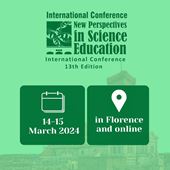Teaching Science through Ballet: A Cross-Disciplinary Approach
Irena Hristovska, Mentor Teacher, Expert Practitioner/Assistant at the Faculty of Philosophy in Didactics; External Collaborator with the Bureau for Development of Education/Ministry of Education. (Macedonia, The former Yugoslav Republic of)
Marina Dimitriev, Advisor at the Bureau for Development of Education; Doctor of Science (Ph.D.) (Macedonia, The former Yugoslav Republic of)
Abstract
Science education often faces the challenge of making material relevant and accessible to students from diverse cultural backgrounds. This paper explores innovative approaches to teaching scientific concepts through the integration of ballet as an art form and cultural expression, supplemented by modern technologies such as Artificial Intelligence (AI), Virtual Reality (VR), and Augmented Reality (AR).
Ballet performances are used to illustrate concepts from physics (gravity, balance, force), biology (human anatomy and physiology), and chemistry (materials and stage design). These concepts are further enriched with AI tools that enable motion analysis, force prediction, and personalized learning, as well as VR/AR applications that immerse students in interactive, three-dimensional ballet worlds, providing new perspectives for understanding scientific principles.
The study includes the development and implementation of interdisciplinary teaching modules that combine practical and theoretical activities related to ballet, with VR and AR used for scene simulations and AI as a motivator for exploration and creativity. Additionally, the research examines the historical and cultural dimensions of ballet performances, highlighting how they can be localized and contextualized in science education.
Preliminary results from the implementation show increased student engagement with science, improved understanding of abstract concepts, and enhanced creative thinking. The use of AI, VR, and AR not only complements the experience but also inspires students to explore contemporary scientific and technological issues, paving the way for their future in education. This research opens new perspectives for integrating art and science, emphasizing the role of cultural context and modern technologies in enriching the teaching and learning process.
 New Perspectives in Science Education
New Perspectives in Science Education





























